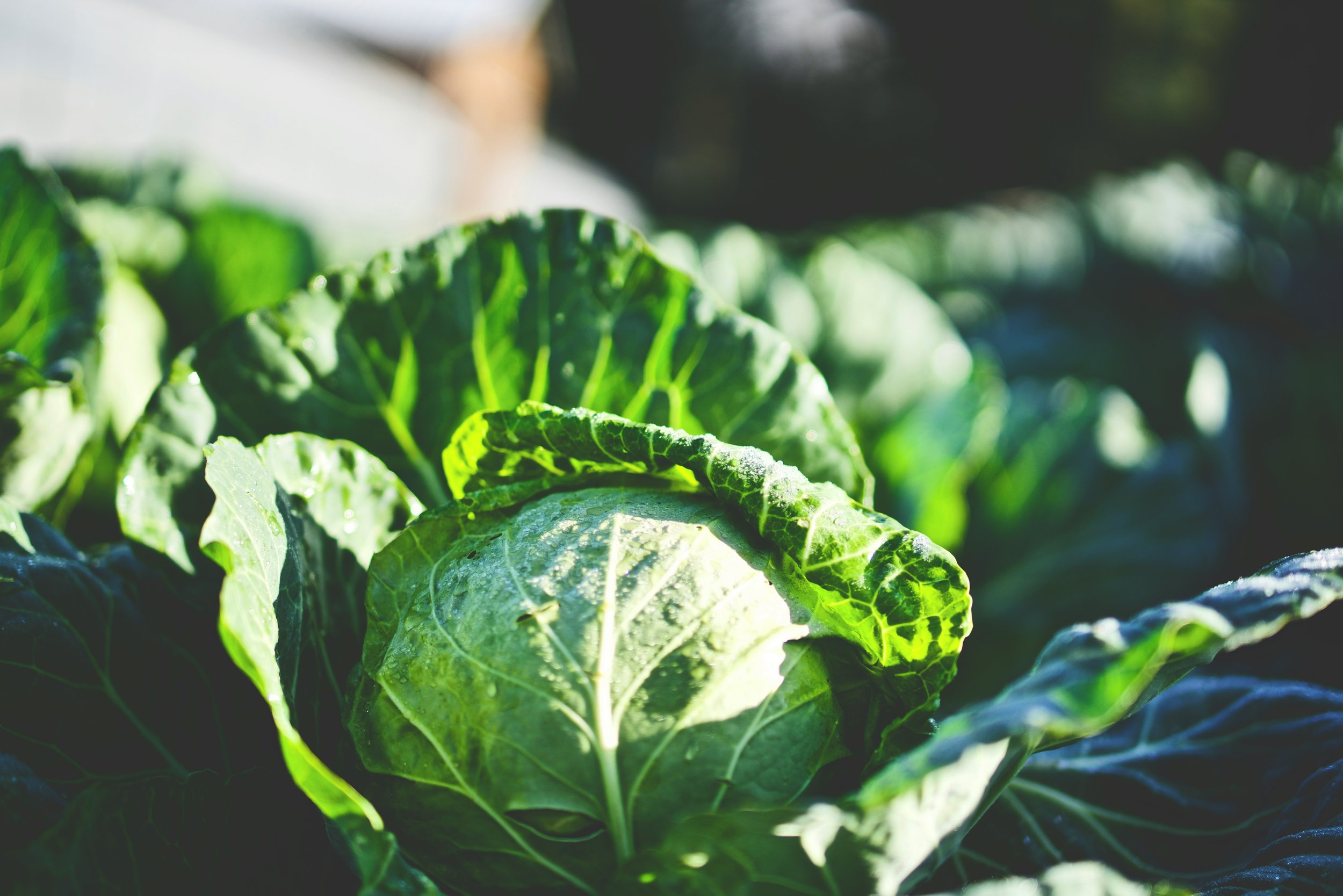KEEP THE FLOOR CLEAN!
I was in charge of the tenderloin.
I found a recipe that looked pretty good. I did all the detail work; I trimmed the silver skin, folded over and tied up the thin end, I prepared a garlic herbed butter, and I timed the cooking schedule so I’d finish things off right before our scheduled dinner time. I had it all planned out and under control.
Of course, things didn’t go as planned.
I’m referring to last Sunday’s Easter dinner. We hosted the family gathering at our place, and the evening did turn out great, but there were a few bumps in the road getting there.
First, the cooking time I estimated was off. Our scheduled eating time came and went and the tenderloin still wasn’t done. Ok, not a huge deal. A little more oven time and dialing up the temp... easy fix. The real problem arose as I was taking the tenderloin out of the oven. Somewhere between pulling out the rack and reaching for an extra hot pad, things went south, and by south, I mean the tenderloin ended up on the floor.
SPLAT!
Just minutes before game time, the main course took a fall. Not good!
Of course, the kitchen was crowded with the family, so everyone saw what happened. It got real quiet, real quick... except for a string of “comments” coming from me.
So, I did the only thing I could think of. I quickly retrieved the “escaped” tenderloin and, under group agreement, declared a classic five-second rule. I gave it a good rinsing under the faucet and returned it to the oven for a brief “sanitizing” cycle under high heat. And just like that, we were back to getting the meal on the table.
Luckily, I’ve got a tough - and forgiving - family!
Cameron Rees, General Manager
It ended up just a little overdone, but other than losing all the garlic and herb-butter love off the top, the tenderloin came out pretty good. Crisis averted.
The rest of the evening went smoothly. In the end, we were filled with the joy of a great family gathering... and a story we’ll be able to share for years to come! The stress of the day has faded and only the laughs will remain.
Needless to say, I hope your Easter gatherings went a little smoother than ours!
Spring is continuing to fight its way into our lives. We’re continuing to fill the lot up with all kinds of amazing plants. Come see us when you have a chance.
Happy Easter season everyone!
—Cameron Rees
“THYMELY” ADVICE:
DON’T PLANT SUMMER VEGGIES
TOO SOON!
Spring has sprung and veggie season is in full swing!
We have a decent amount of moisture in the ground right now, perfect for getting those early-season crops planted. Cabbage, brocolli, lettuce, cauliflower, spinach, turnips, and peas are some of the cool season plants that can be put in now. Onion sets and onion plants are also available and can be planted now, along with bare root strawberries, asparagus, and rhubarb. Oh, and if you haven’t yet, get those potatoes in the ground too! It’s time.
On the flipside, now is NOT the time to be thinking about veggies such as tomatoes and peppers, to name a couple. However, if you have growlights or a home greenhouse, you can seed them and get them started that way.
Here are a couple of things to know before putting tomatoes and peppers in the ground….
You want to wait until the temperatures have warmed up consistently and the ground temperature is above 60 degrees. Your plants won’t do much growing when the ground temps are below 60 degrees, so you won’t be gaining much!
Other veggies to wait on till the temps warm up are sweet potatoes, melons, squash, and pumpkins. Wait to plant these at the end of April or beginning of May.
A great garden resource is this KSU Planting Guide: http://www.bookstore.ksre.ksu.edu/pubs/S51.pdf . But as always, we are here for all your questions and planting needs. Call or stop by!
—Misty Brown
fresh asparagus
… IT’S THE BEST!
Asparagus is one of my favorite garden vegetables, partly because I love asparagus, but also because it’s one of those vegetables, like tomatoes, where what you harvest from your own garden is SOOOO much better than what you purchase at the grocery store. And it’s easy to grow!
Asparagus is one of the few perennial vegetable garden crops. Perennial means it comes back year after year… just like iris, peonies, and daylilies... which means you plant it once, but enjoy it for many years to come.
And now is the time of the year to set it out.
Here at the store, we have the asparagus crowns you’ll need in stock and in our produce cooler, ready for purchase. All you have to do is figure out how many you need and get them planted!
The vegetable garden experts at Kansas State University recommend planting 10-15 crowns per person. That may seem like a lot, but we’ve got 25 crowns in our asparagus plot, and with just two of us, I can confirm that works out about right.
You’ll want to select a sunny spot and give yourself plenty of room. Mature asparagus plants will grow about head-high and easily spread as wide. Leave plenty of room for future growth.
Also, do as much soil improvement as you can before you plant. That means adding compost. Just like any other plant, the better the soil, the better it will grow, and the better it grows, the better the production.
If you plant this spring, you’ll be able to harvest lightly for a couple of weeks next spring, then you can plan on a full, 6-8 week harvest from that point on. Harvest season typically runs from mid-April through early June.
We purchase most of our asparagus crowns from Pendleton’s Country Market in Lawrence. Here’s a great growing tip sheet they’ve prepared. And below are a few extra tips from us.
TIP #1: When it comes to harvesting, don’t cut the spears from the ground… snap them! Cutting certainly works, but often results in harvesting a lot of the woody parts at the base of the stem. Snapping typically breaks the spear above those tougher areas, leaving you with just the soft, tender, edible portion. Trust me, you don’t want to eat the woody parts!
TIP #2: You won’t get to enjoy fresh asparagus if you don’t get it planted. That may seem obvious, but it’s worth saying. Sometimes it can be tough to commit to planting something you know you won’t be harvesting off of for at least a year. Make the commitment and get it planted now! You won’t be sorry when you reap the rewards.
Here’s the last bit of info I’ll leave you with…
We have four asparagus varieties to select from this spring.
Millenium – This male introduction is a heavy producer and our number one seller. It is tolerant of a wide range of soils, including heavier soils.
Purple Passion – This variety actually produces purple asparagus! They also have a higher sugar content than other varieties, giving it a mild, sweet flavor.
Jersey Knight – This is one of the all-male, Jersey selections. Very productive with tight spears.
Atlas – Tall spears that stay tight under warm conditions. Very productive
These are all good varieties. Our top recommendation is Millenium, followed by Purple Passion, but the truth is, you won’t go wrong with any of them. Personally, I’ve got a blend of 4 or 5 varieties in my patch and they all produce well. And they all taste great!
Actually, I lied. Here’s one more tip...
TIP #3: My favorite way to prepare asparagus is grilled. I toss the spears in olive oil, season them with salt and pepper, and then throw them on the grill until they’re charred and slightly softened... not mushy! Grilled asparagus makes a wonderful side dish, and the leftovers are great chopped up and added to a fresh salad or folded into scrambled eggs or an omelet.
It’s time to plant!
—Cameron Rees
what’s new?
THE GREENHOUSE IS TAKING SHAPE!
Our new greenhouse project is full-steam ahead! Come by and see the progress while you shop our other houses and store!
SPRING BLOOMS ARE UNDERWAY!
WRAP UP YOUR CRABGRASS PREVENTION SOON!
Just a reminder that time is running out!
If you want to protect your lawn from crabgrass and other summer weeds, you need to act quickly.
Because we’re getting closer to the first round of crabgrass germination, our product recommendation is different than it has been over recent weeks. From this point on, we’re switching folks over to Hi-Yield Turf and Ornamental Weed and Grass Stopper with Dimension.
That’s a long name, so sometimes we just say, “the one with Dimension”!
Just like the Fertilome “Red Bag”, it goes on in a granular form and should be watered in after application. You can apply this one effectively through April, and even into early May, as long as you adjust the application rate accordingly. The label directions explain these details, but we’ll be glad to go through things with you, as well.
So be sure to let us know if you have questions!




















